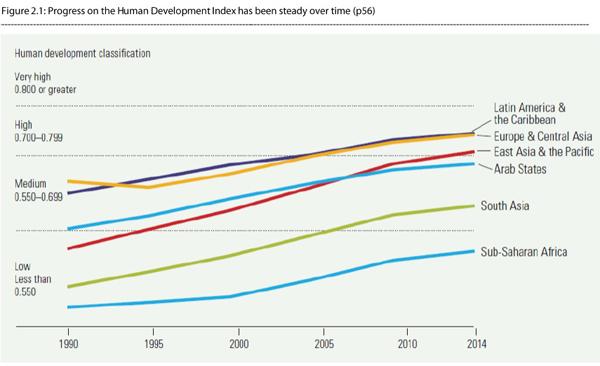You are here
UNDP report highlights progress, targets in addressing inequality
By Maram Kayed - Dec 09,2019 - Last updated at Dec 09,2019
AMMAN — The United Nations Development Programme (UNDP) on Monday launched the global Human Development Report, a blueprint for development efforts for governments, the private sector and civil society.
The report, titled “Beyond income, beyond averages, beyond today: Inequalities in human development in the 21st Century”, reveals that Jordan’s Human Development Index (HDI) value for 2018 is 0.723, placing the Kingdom in the “high human development” category as 102nd out of 189 countries and territories.
Between 1990 and 2018, Jordan’s HDI value increased from 0.616 to 0.723, an increase of 17.4 per cent, according to a UNDP statement.
UNDP Resident Representative Sara Ferrer Olivella said the report highlights why understanding and addressing inequality is key to meeting the Sustainable Development Goals (SDGs) and preparing for the 21st century's "seismic shifts", such as climate change and technological advancements.
“Jordan has witnessed substantial gains in health, education and living standards, yet the basic needs of many remain unmet while a next generation of inequalities opens,” Ferrer Olivella was quoted in the statement as saying.
To ensure that average numbers do not mask inequality, the report measures the Inequality-Adjusted Human Development Index (IHDI), which considers inequality in all three dimensions of the HDI: Life expectancy at birth, education and standard of living (gross national income per capita), the statement said.
Jordan’s HDI for 2018 is 0.723, falling to 0.617 when the value is discounted for inequality, a loss of 14.7 per cent. The average loss due to inequality for high HDI countries is 17.9 per cent and for Arab States it is 24.5 percent.
On gender, the HDR employs the Gender Development Index (GDI), which measures gender inequalities in achievement in three basic dimensions of human development: Health, education and command over economic resources.
The 2018 female HDI value for Jordan is 0.654 in contrast with 0.754 for males, resulting in a GDI value of 0.868, noted the statement.
The report also calculates the Gender Inequality Index (GII) which reflects gender-based inequalities in three dimensions: Reproductive health, empowerment and economic activity.
Jordan has a GII value of 0.469, ranking it 113rd out of 162 countries in the 2018 index.
In the political realm, 15.4 per cent of parliamentary seats are held by women; however, in education, the gender gap narrows, with 82.0 per cent of adult women reaching at least a secondary level of education compared to 85.9 per cent of their male counterparts, according to the statement.
For every 100,000 live births in the Kingdom, 58.0 women die from pregnancy-related causes.
Female participation in the labour market is 14.1 per cent compared to 64.0 for men.
The report also measures the Multidimensional Poverty Index (MPI) which identifies deprivations suffered by individuals in three dimensions: Health, education and standard of living.
In Jordan, 0.4 per cent of the population (42,000 people) are multi-dimensionally poor, while an additional 0.7 per cent (67 thousand people) are classified as vulnerable to multi-dimensional poverty.
According to the report, Arab states have experienced “significant growth in human development over the past two decades”, but the unequal distribution of education, health and living standards has stymied progress in the region, with up to 24 per cent of human development value lost when adjusted for inequality.
Speaking for the region, UNDP Acting Associate Administrator and Regional Director for Arab States Mourad Wahba said in the statement that the report “calls on us all to examine inequalities in order to support efforts to promote a more equitable distribution of opportunities among people everywhere”.
Related Articles
AMMAN — Jordan ranked 102nd on the 2021-2022 Human Development Index, according to a report released by the United Nations Development Progr
The Kingdom has maintained its ranking in the Human Development Index (HDI) for the past two years, standing in 77th place, according to a recent report.
AMMAN — Jordan has dropped three places in the UN Human Development Index (HDI), ranking 80th of 188 countries in the 2015 report issued by


















